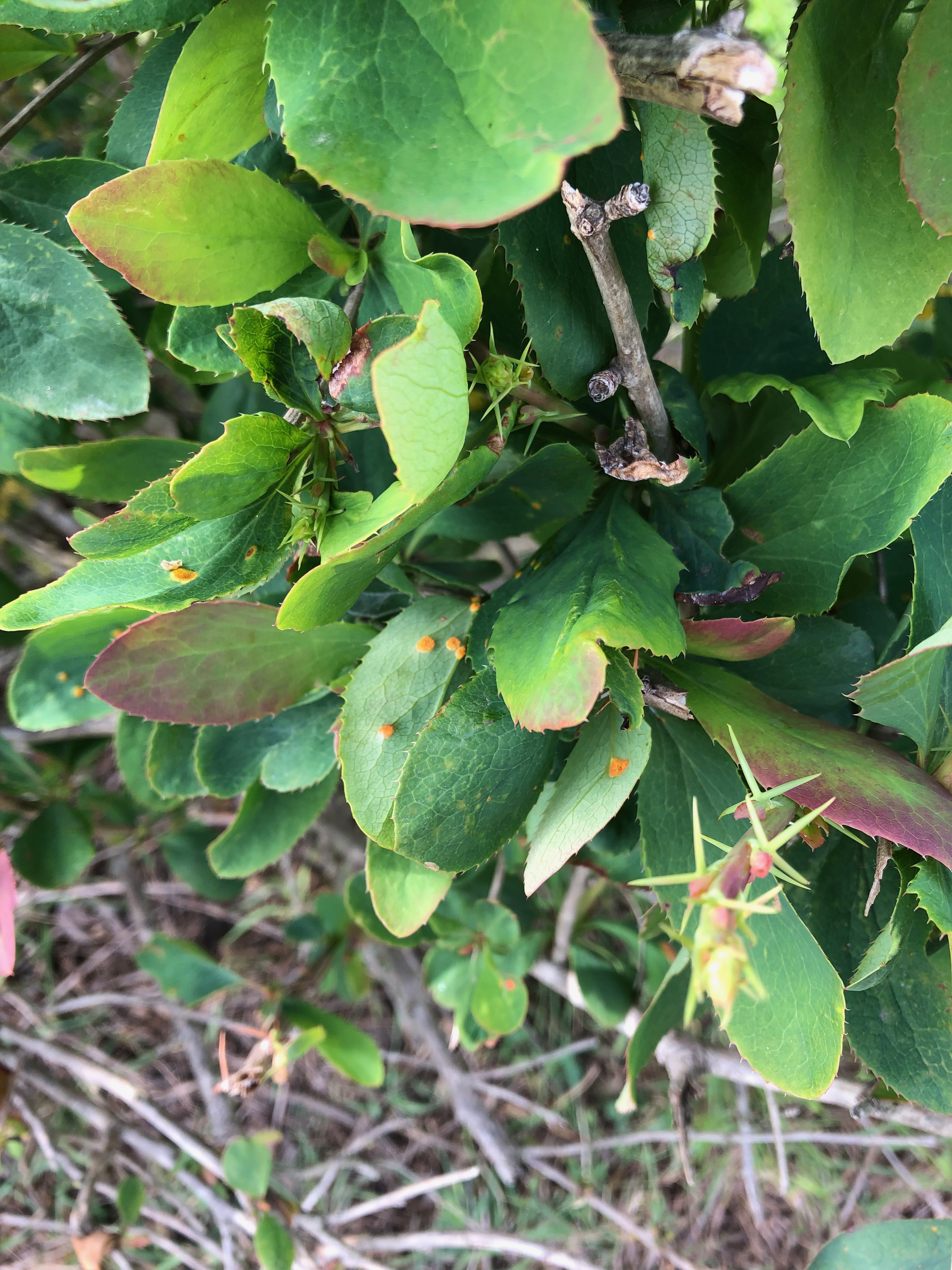Stem rust
Stem rust is called the “polio of agriculture” due to the serious damage it can inflict on small grain crops such as wheat and barley, leading to complete crop loss if left untreated. The disease is caused by a fungus called Puccinia graminis that spreads between crop plants by creating thousands of spores (called urediniospores) that blow on the wind to start new infections. In this case, each urediniospore is a clone and closely resembles the original fungal strain, with all its features.
What is the role of Berberis?
Once these crops start to mature in the late summer, in colder climates like the UK the fungus enters a dormant state on plant debris. When it awakes in the spring it then infects a different unrelated plant called Berberis. This shrub can occur in hedgerows alongside cereal crop fields and is where the fungus completes sexual reproduction. When it does this, it shuffles genetic material between two strains and makes new genetic combinations.
These new fungal strains are different to the original ones and may have new characteristics such as being able to infect previously resistant crop varieties. Once this stage is complete, the fungus then creates a new type of spore (called aeciospores) that spreads these new strains into neighbouring cereal crop fields to continue the infection cycle.
How can mathematical modelling help?
The crucial role of Berberis plants for the stem rust lifecycle historically led to their removal in Europe and northern USA, particularly the removal of B. vulgaris (common barberry) that is very susceptible to stem rust infection. Today, as we currently have limited reports of stem rust infection on important cereal crops like wheat in the UK each year, we can be more strategic and use spore dispersal modelling to work out which Berberis bushes need careful monitoring.
This is where mathematical modelling can help. We can use maths to determine the likely distance spores can travel on the wind from an infected Berberis bush, and thereby the risk those bushes pose as sources of infection for cereal crops in the area. As the spores that are created on Berberis bushes blow on the wind to infect neighbouring cereal plants, environmental factors such as wind speed are also important for the model.
As stem rust of wheat is starting to re-emerge as a problem in western Europe it is vital that we develop a map of where high-risk bushes occur so they can be checked for infection and monitored as this fungus continues to increase in concern in the UK.
Find out more about how this model works HERE
